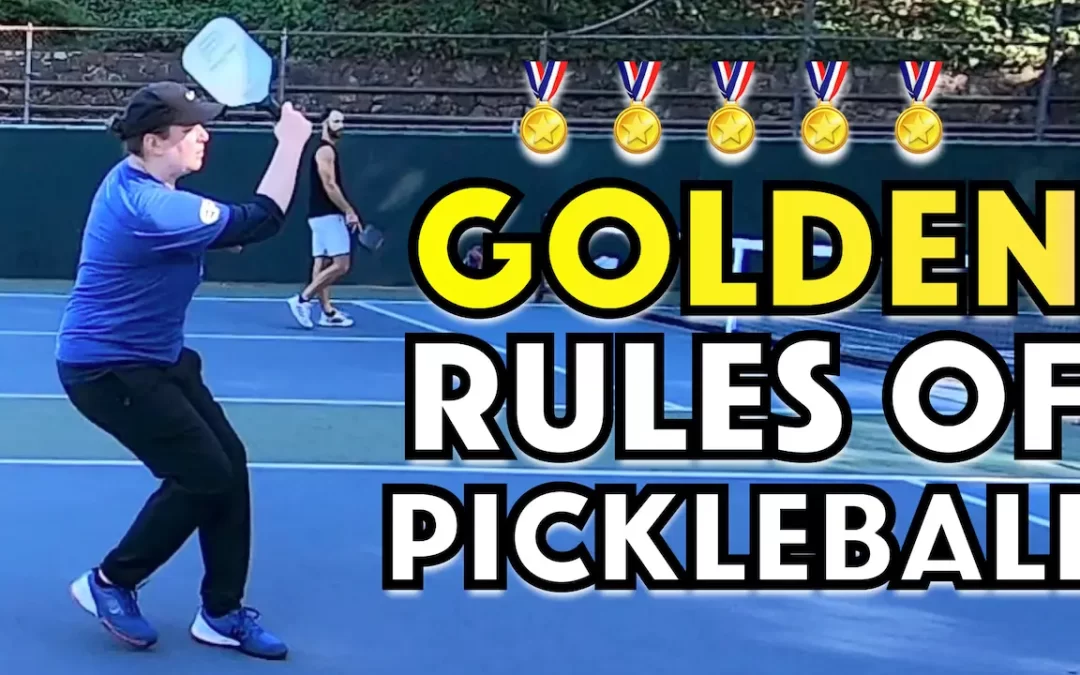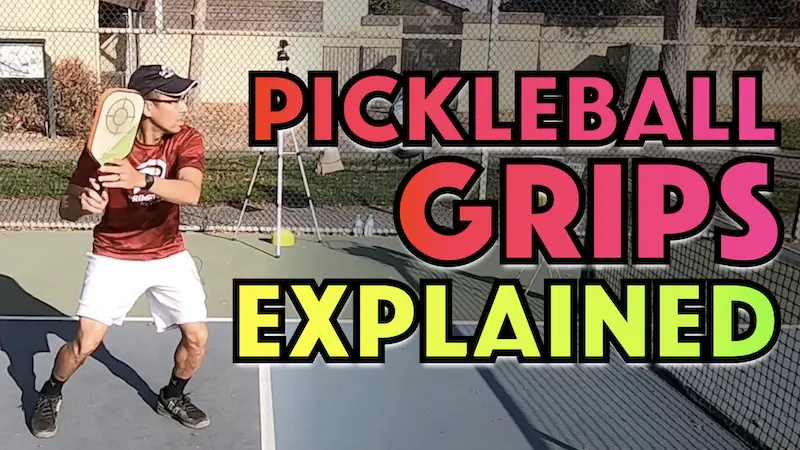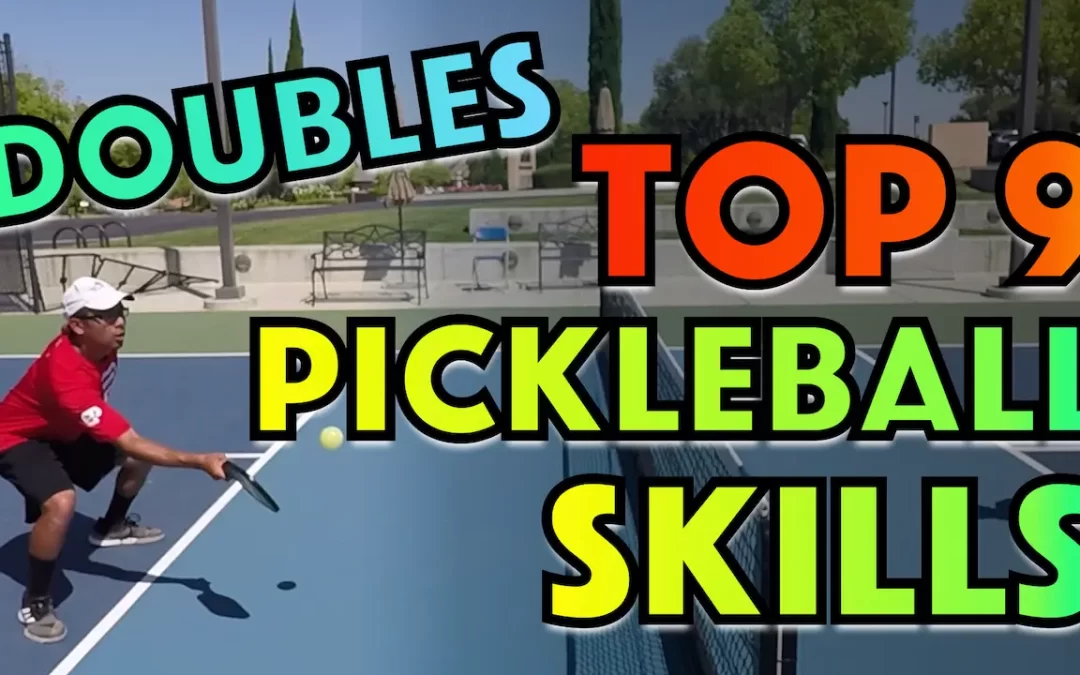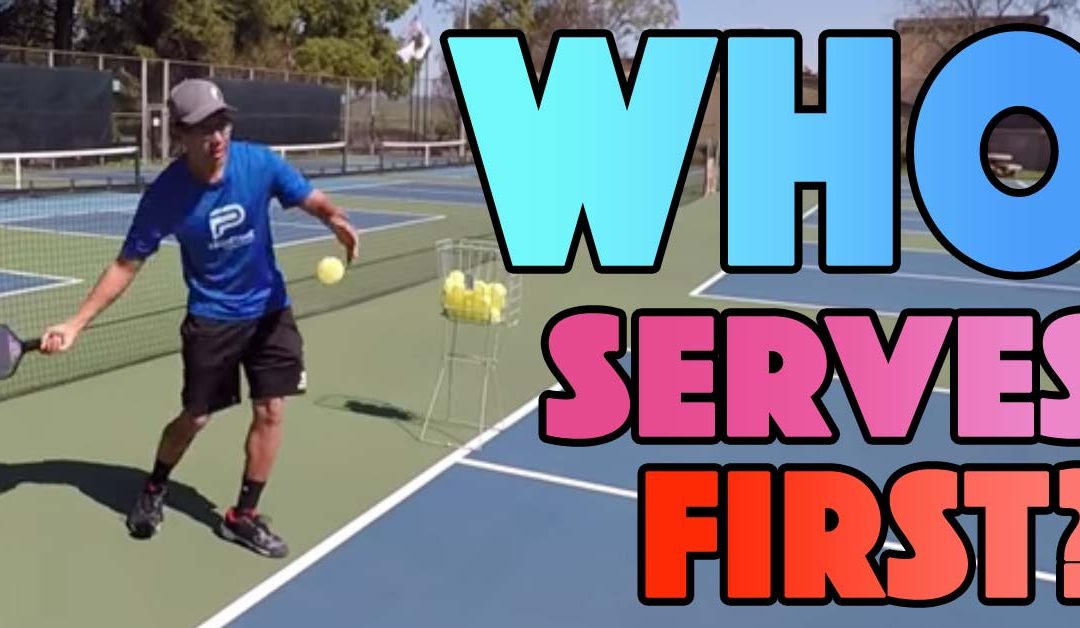There’s one major thing standing between you and the level of play that you aspire to.
Most players that are feeling stuck and like they’re not getting anywhere with their game are simply not aware of it.
These players express frustration because although they feel like they’re working really hard on their shots to level them up, it just seems like they’re not really getting anywhere and not moving the needle as much as they would hope or expect.
Often it comes down to the same underlying problem.
If you’re not yet an advanced player, then this is almost surely standing in the way and a big part of the reason why.
You’ll never make it to the level you desire unless you understand the number one thing that’s going to allow you to get there.
It’s a make-or-break thing and if you don’t understand it then you’re not going to get there so please pay close attention to the very important lesson that I have for you today.
Do you want to make this a breakthrough year for your pickleball? Then you need to make sure you understand what it really takes to get to that next level.
I’ll never forget this one player that I coach. Her story perfectly illustrates the dramatic shift that every player needs to make to see progress.
This player was a highly ranked junior tennis player. She was very talented.
When I started working with her she already came with a lot of positive attributes: a good serve, a really good forehand, pretty good volleys, etc. All of which could be built up more and become reliable weapons with which she could dominate the court.
Her one glaring weakness was her two-handed backhand ground stroke.
To put things in perspective, a lot of adult recreational players would kill to have a backhand like hers. But, to have success at the level that she was aspiring to, it needed to get a lot better.
She could often win without relying on it a whole lot but not against the top girls that knew how to expose it. Her backhand would get attacked, picked apart and would ultimately break down.
She wanted to break through that barrier, and this was one of the major tasks that I was assigned with, along with improving her game overall.
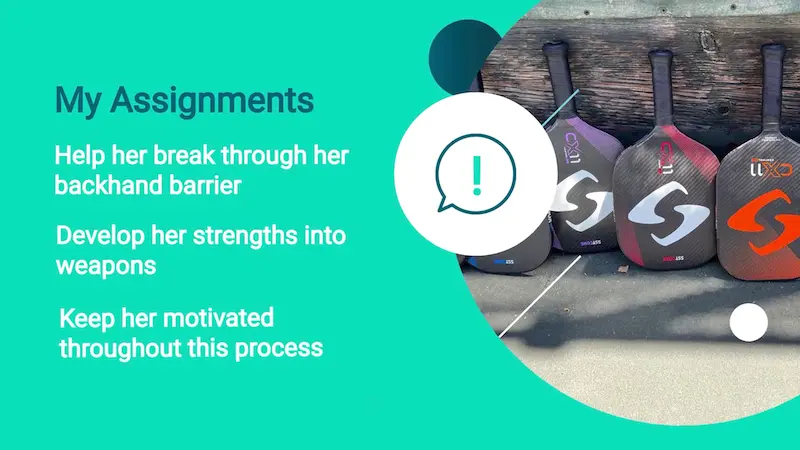
We went to work on everything.
For a few solid months we worked on her backhand a majority of the time.
We worked on every aspect of it: shortening the backswing, contact point more out in front, more racket head drop, aggressive, neutral and offensive footwork patterns, etc. Everything you could possibly work on when it comes to improving a stroke.
We worked on every possible shot variation that she would have to face with her backhand.
At her level, nuance matters and we covered it all, repeatedly.
That went on for months and months. I think it was about six months.
During those six months she was still playing tournaments and having success but in the tougher matches, when she came up against stiff competition deeper in the tournament, her backhand would ultimately still be a liability.
Despite that, I really wasn’t worried at all.
To the untrained eye it seemed as though her backhand wasn’t improving all that much, but I knew that it was.
I was starting to see flashes of excellence in it and though they were fleeting moments, shifting was happening. She just didn’t have full command of it yet and I fully expected that before we ever embarked on the backhand project.
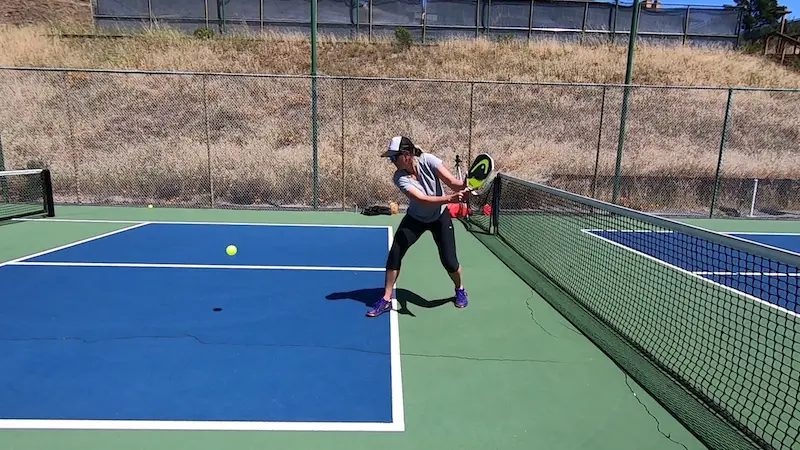
Others would look at it, including her dad, and say, “Oh it’s really erratic.”.
It’s true, it was, and I was thrilled about it because although it was few and far between, she could hit a great backhand which she couldn’t do at all before.
That’s progress!
We kept working, the flashes kept coming, still infrequent but more, and we kept working. More flashes. More training. Some bad days. Some good days. More training. More flashes.
This went on and on, like I said, for about six months.
Then, one day, we were having a lesson and the flashes weren’t flashes anymore. She was hitting good backhands most of the time.
This went on for a few more lessons. Solid backhands throughout the whole session and in competition too.
I said to her, “You know your backhand has looked rock solid these past couple of weeks, how does it feel to you?“
She said, “It feels great!“
I said, “Oh yeah and when did that happen?”
She said, “I’m not sure but it just clicked in at some point recently and I feel like I have a good solid reliable backhand now.”
BOOM! And that’s how it happens.
She literally cannot go back to her old backhand now because it’s been totally reprogrammed. We successfully upgraded her backhand software.
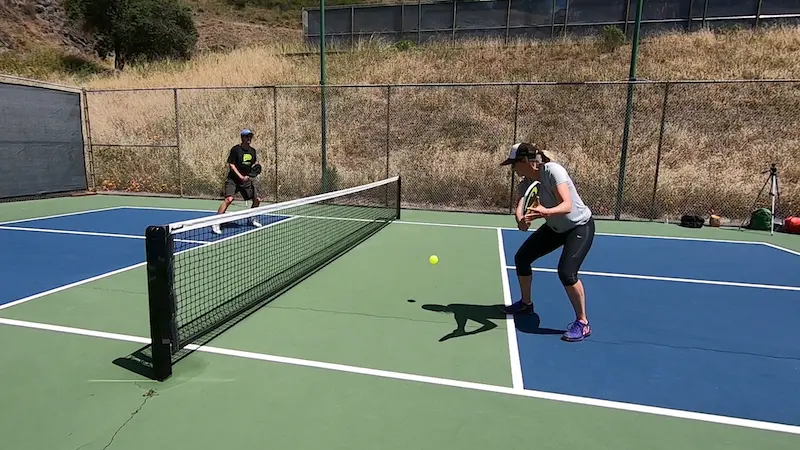
It took many months and a lot of focused effort over those months to make that shift.
When you’re trying to improve a stroke it’s important to remember that.
At times it seems like it’s not improving at all even though you may already have many hours, days, weeks or even months of training invested into it.
The problem is with the word “seems”. It may seem like it’s not improving but the truth is it’s much more likely that it has improved just not as much as desired.
We all want things to happen now, and it just doesn’t work that way. You must be relentless.
Improvement is simple but it’s not easy.
You only need two things:
- Knowledge of the right way to do it.
- Relentless belief and persistence in training until transformation is complete.
We can supply you with number one and we do so every day on this YouTube channel including one of our very best training video ever covering the top nine skills in modern pickleball and how to master them.
Go watch that video and take what you learned from it to the courts and bring number two to the table.
In the past, once I’ve gotten this across to people, what they usually say to me at this point goes something like this:
“Okay, Nicole, I’m starting to see what you’re talking about now and yes, I have been stuck at a plateau on one or more of my shots. I just haven’t been able to break through to that stage where I can count on it, but I see now that I just have to keep going and train all aspects of the shot repeatedly and relentlessly until it’s essentially automatic and basically now part of my DNA and I just won’t even be able to remember how I ever hit it badly before.”
I say, “Yes, now you’re starting to get it!”
Then the very next question is often this “okay so what’s a reasonable training schedule?”
Great question. You want to be relentless, but you also don’t want to burn out by training one shot for six hours a day every day.
Anything even approaching that is just not smart and a quick way to get injured.
Training Framework
Here’s a framework that can get you headed in the right direction.
If you want to change a skill you do need to focus on it regularly, so I’d suggest you train it a minimum of three days a week for a minimum of 30 minutes on the specific skill you are focusing on at that time.
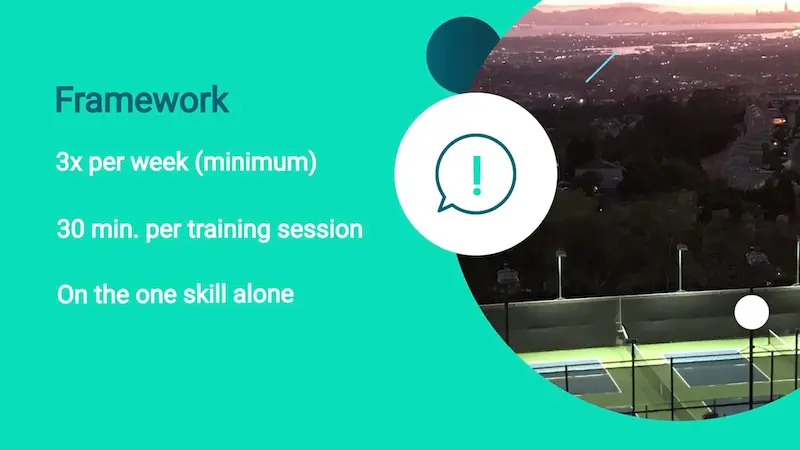
Please be clear that I’m not saying that this is the entirety of your drilling session for the week. This is only the part where you are single-mindedly and purposefully working on that one skill that you are really trying to shore up and make a transformation on.
Also, notice that I said this is a minimum.
You could go up to four days a week or maybe even sometimes five and closer to an hour of work on that skill alone.
Have two or three drills specific to that skill that you rotate between in your sessions and don’t forget you should still be working on other skills as well.
I find that a great way to structure a training session is as follows: whatever amount of time you’ve devoted to a drilling session on any particular day, a good way to break that time down is to spend two-thirds of the time on your weaknesses and one third of your time on sharpening your strengths.
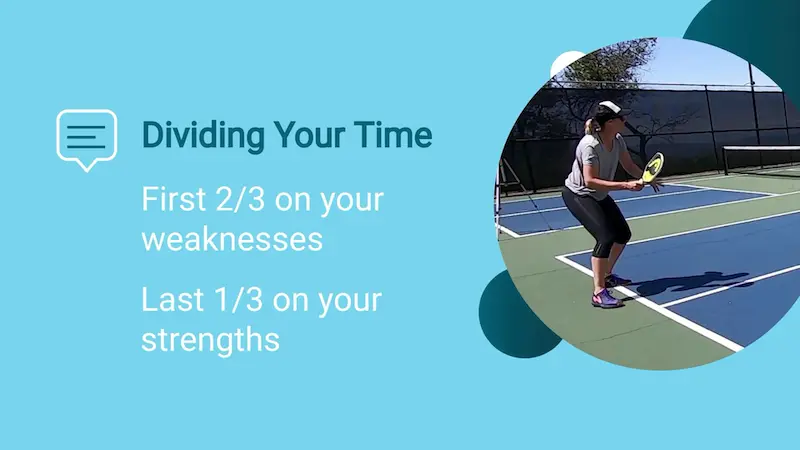
You’ll want to spend the first two thirds on your weaker areas because you’re fresher earlier in your session than you are later on and working on areas of your game that are a challenge for you is more mentally, physically and emotionally demanding.
Then, spend the last third sharpening a strength or two so you can end the session on a high note and be eager for your next drilling session.
For example, let’s say you’ve blocked off an hour and a half on a particular day for drilling you’ll want to spend the first hour on weaker areas of your game that you want to shore up and the last 30 minutes on strengths in your game that you want to sharpen.
You’ll take that first hour that you’ve devoted to spend on weaker areas of your game and take 30 or 45 minutes of that block of time devoted to the one skill that you’re really trying to transform and the last part of that hour to another weakness that you’re trying to shore up.
That’s a good way that you can break it down while still working on other skills but still spend a solid block of devoted time to that major transformation you’re trying to make.
You should do this type of training weekly for as long as you need to transform the skill you’ve identified, and you should really be doing this weekly for as long as you play the game of pickleball and are eager to improve.
Once you’ve transformed the current skill you’ve been working on, simply pivot to the next one you want to level up and so on and so forth.
It’s quite simple but it does take a big commitment and discipline to follow through over long periods of time.
Conclusion
I really wanted to get this information out there and provide a framework as to how you should approach drilling over the long term. It can be unclear to players that are striving to get better just how improvement happens and how they should build it into their pickleball.
Many players can get to a place where they’re hitting a weaker stroke better but just because you can hit it a few times well here and there does not mean it will show up for you when you need it in a game. In fact, it probably won’t, especially not under pressure.
It takes a lot more time than you might thing to really gel and solidify a stroke until it becomes the natural way you now hit it that you don’t even have to think about anymore.
It basically gets baked into your DNA so to speak.
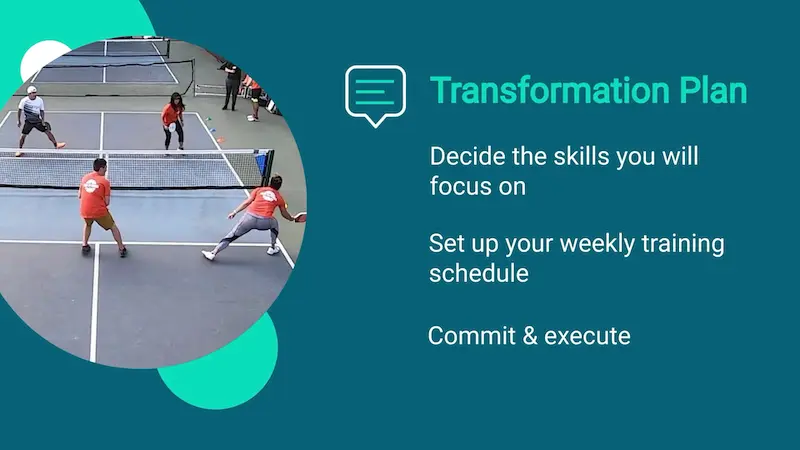
Only then do you truly own that skill and will it be able to show up for you when the game is on the line. You just hit it that way now. Period.
Relentless training such as what I’ve described here is how anyone who got great at anything made it happen. You can do it too.
Get out there and get after it and improve your skills, skill by skill, and you’ll become a whole new player before you know it!


